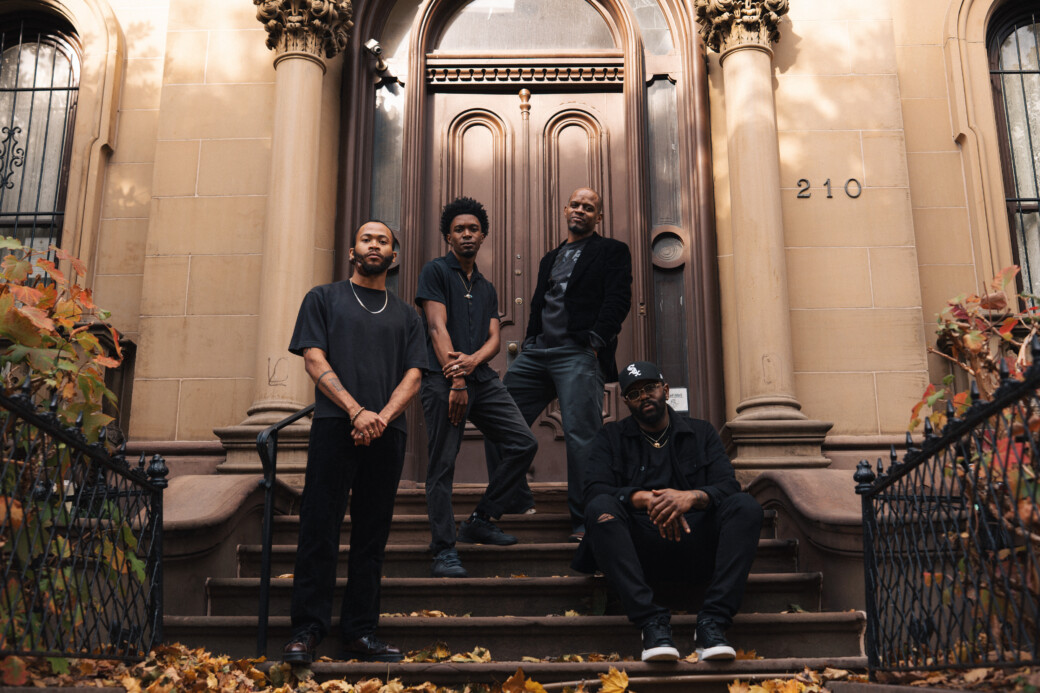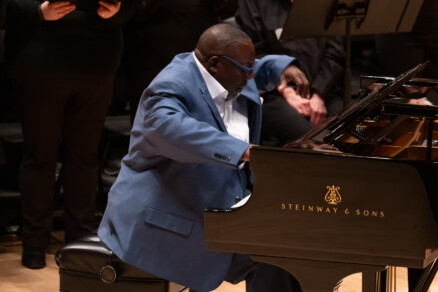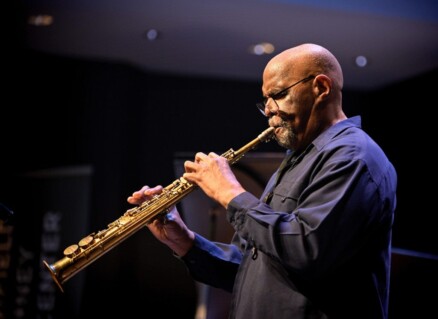Brandon Woody’s ‘For The Love Of It All:’ A narrative journey of love, resilience and community

Trumpeter Brandon Woody and his band Upendo have been regulars in the D.C.-Baltimore jazz scenes for the last decade. Until now, the band has been best known locally for their electrifying live performances. On May 9, that is all set to change, as Woody and Upendo make their national recording debut with For The Love Of It All, released through the historic Blue Note Records label.
Woody and Upendo introduce themselves to the world through a musical narrative about love, faith, community and generational memory.
Born and raised in East Baltimore, Woody’s sound carries the soulful ethos of the city’s Black musical tradition, which can be heard throughout the album. As Woody told BmoreArt in 2022, music and community are intimately intertwined – a belief rooted in his childhood filled with the sounds of the Isley Brothers, Stevie Wonder and the Temptations.
For The Love Of It All represents a milestone for Woody after the trumpeter decided to return home to Baltimore seven years ago. After graduating from Baltimore School For the Arts and attending college at Brubeck Institute in California, Woody made it to the country’s jazz capital – New York City – and toured with Solange. But, in 2018, Woody decided to return home to Baltimore, seemingly in order to nurture his artistic development in the city that raised him.
Each track on For The Love Of It All clocks in at around seven minutes, all telling a different part of Woody’s story and message as he walks listeners through six distinct yet intimately connected songs. Throughout the album, Woody and Upendo affirm the essence of jazz as a communal space, with no one voice rising above another to dominate the sonic atmosphere. Simultaneously, the band draws from a range of Black music styles, fusing the vibrant melodicism of hard bop and freedom of improvisation with the soul of gospel and deep emotion of blues.
The band’s chemistry deepens the project, a grounding force in their musical delivery. The collaborations between longtime friends Woody and pianist Troy Long are the most poignant. The pair formed their first band together as teenagers and co-wrote tracks four and six on the album, and their lifelong growth together as musicians and friends adds a powerful element of connection in their composition.
The first track, “Never Gonna Run Away,” eases listeners in with a light piano melody, as Long embraces the keys carefully and emotionally. When Woody enters on the trumpet, he gives listeners a soulful and rhythmic horn melody. He plays with a passion, emotion and honesty that commands attention, telling his audience that he has something to say.
“Never Gonna Run Away” is perfectly layered, with each artist getting a chance to say their piece. Accompanied by the soft heartbeat of Quincy Phillips on drums, Woody’s trumpet plays duet partner to the subdued and airy vocals of guest artist Imani-Grace. Woody’s energetic improvisations embody the spirit of Baltimore, reflecting at once belonging, triumph and pride.
The second track, “Wisdom; Terrace on St. Paul St.,” is deeply reflective, touching on themes of transition. The song begins with a muffled melody held by Woody and Long, creating a sense of sonic distance and evoking feelings of longing and meditation. When the sound is brought into clarity, listeners are engulfed in the bright timbre of Woody’s horn and Phillips’s dynamic, delicate rhythms.
Track five, We, Ota Benga is a sort of musical biography. It tells the story of Ota Benga, who, in 1904 was trafficked from Congo to the U.S. and displayed as a spectacle alongside monkeys at the Bronx Zoo. Woody recounts Ota Benga’s life through song, balancing strict technical structure and the fluidity of freedom.
Woody begins with Ota Benga’s origins in Congo, delivering a simple melody representing the wholeness of freedom, and later transitioning into more busy, layered rhythms that depict the chaos and pain of his exploitation. This is Woody’s effort to revisit and address the forgotten histories of Black America.
Woody’s use of music as a mouthpiece for storytelling is especially visible on the album’s final track, “Real Love, Pt. 1.” It is an ode to Upendo’s bond as a group. They give all of themselves, showcasing both their collective and individual artistry. Their sound is hopeful, looking toward the future and acknowledging the resilience of those that came before them. It is spirited and vulnerable, and listeners can hear the band in conversation with one another.
For The Love of It All is a story of personal and cultural identity, perseverance and cultural memory. It is a testament to Woody’s roots, heritage and the emotional tenderness of his coming home.


